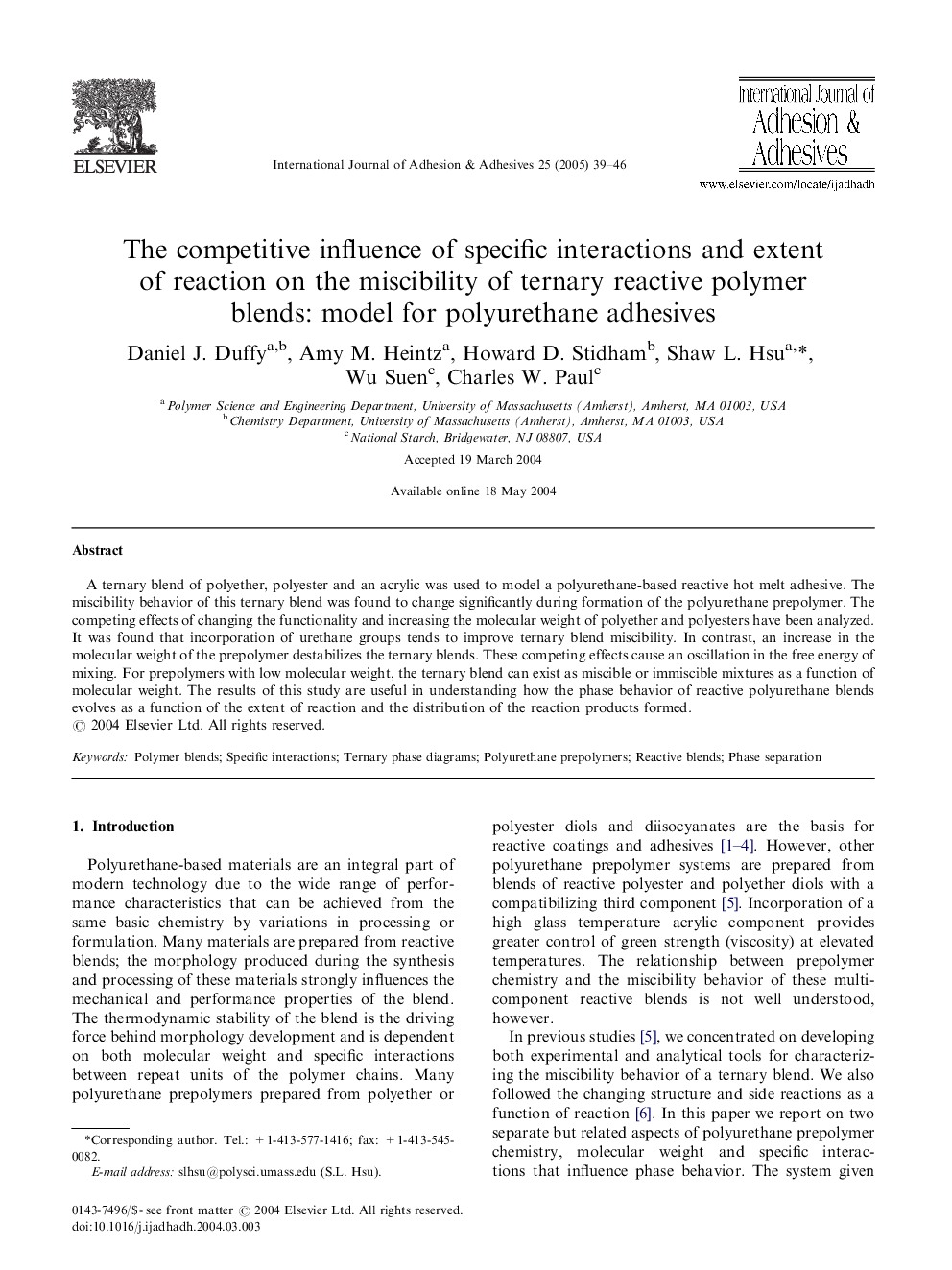| Article ID | Journal | Published Year | Pages | File Type |
|---|---|---|---|---|
| 9703585 | International Journal of Adhesion and Adhesives | 2005 | 8 Pages |
Abstract
A ternary blend of polyether, polyester and an acrylic was used to model a polyurethane-based reactive hot melt adhesive. The miscibility behavior of this ternary blend was found to change significantly during formation of the polyurethane prepolymer. The competing effects of changing the functionality and increasing the molecular weight of polyether and polyesters have been analyzed. It was found that incorporation of urethane groups tends to improve ternary blend miscibility. In contrast, an increase in the molecular weight of the prepolymer destabilizes the ternary blends. These competing effects cause an oscillation in the free energy of mixing. For prepolymers with low molecular weight, the ternary blend can exist as miscible or immiscible mixtures as a function of molecular weight. The results of this study are useful in understanding how the phase behavior of reactive polyurethane blends evolves as a function of the extent of reaction and the distribution of the reaction products formed.
Related Topics
Physical Sciences and Engineering
Engineering
Mechanical Engineering
Authors
Daniel J. Duffy, Amy M. Heintz, Howard D. Stidham, Shaw L. Hsu, Wu Suen, Charles W. Paul,
